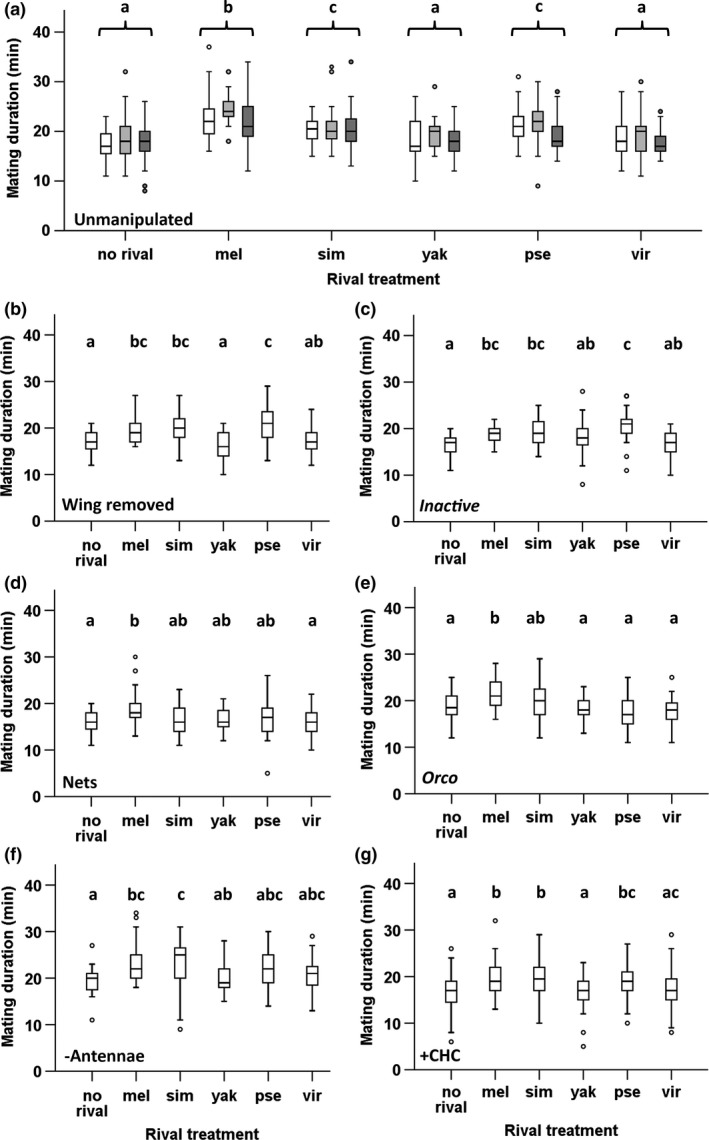Figure 2.

Mating duration responses of Drosophila melanogaster focal males to conspecific or heterospecific rivals. In each experiment, males were maintained on their own (no‐rival) or exposed to a “rival” for three days prior to mating. D. melanogaster (mel), Drosophila simulans (sim), Drosophila yakuba (yak), Drosophila pseudoobscura (pse), or Drosophila virilis (vir). (a) Mating duration responses of mel focal males to mel, sim, yak, pse, or vir “rivals” males—no manipulation of sensory cues. Three replicated experiments are shown (1—white, 2—light gray, 3—dark gray). (b) Mating duration responses of mel focal males following manipulation of auditory cues—by removing the wings of mel, sim, yak, pse or vir “rival” males, or (c) using hearing‐defective focal mel males carrying the iav mutation. (d) Mating duration responses of mel focal males following manipulation of tactile cues, by maintaining mel males in vials separated from mel, sim, yak, pse or vir “rival” males by netting. (e) Mating duration responses of mel focal males following manipulation of olfactory cues—using olfactory‐defective focal mel males carrying the Orco mutation, or (f) by removing the third antennal segment of wild‐type mel focal males, or (g) by providing mel male CHCs extracted in hexane (data shown are CHCs combined with the carrier control as the effect of the addition of CHCs was nonsignificant). Treatments that do not share a letter were significantly different (post hoc Tukey's tests with Bonferroni adjustment)
